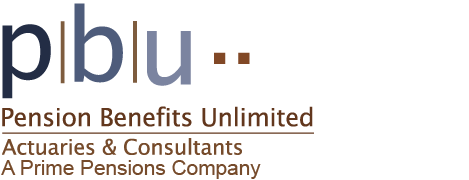MONEY PURCHASE PLANS
A money purchase pension plan is a type of defined contribution plan to which the employer makes mandatory tax-deductible contributions according to a pre-determined formula. The formula for allocating the contribution to various employees is generally a specified percentage of each participant’s compensation, but other formulas are permitted. The contributions grow tax-deferred, and are taxable to the employee only when they are distributed. The contribution requirement and allocation formula are specified in the plan document. The plan must designate itself a money purchase pension plan
ADVANTAGES
- Offers employees the security of reliable, regular contributions through the course of their careers
- Limitations on in-service withdrawals impose retirement saving discipline, and make it more likely that retirement funds will indeed be used for that purpose
- For planning purpose, the employer’s contribution amounts can be determined in advance with a high degree of accuracy
- Flexibility in the determination and allocation of contributions using any one of a number of formulas: (a) proportionate to compensation; or (b) proportionate to compensation adjusted for Social Security benefits; or (c) age-weighted, considering age and compensation as factors; or (d) a new comparability allocation formula, which allows the employer to maintain flexibility in allocation as long as the results can project and prove mathematical equity at normal retirement age
- An employee stock ownership plan (ESOP) can be structured as a money purchase pension plan, but not as a profit sharing plan
- Under the safe harbor rules of Internal Revenue Code section 414(n)(5), if a leasing organization maintains a money purchase pension plan that meets certain conditions, the employees are not treated as leased employees of the recipient employer
- The plan may allow or require employees to make after-tax contributions, but these contributions would have to be tested for nondiscrimination
- Plan loans may be permitted
- Money purchase pension plans are preferred by unions, because they obligate employers to contribute to the plan
- A non-profit organization, church, or governmental entity may also adopt a money purchase pension plan
- A money purchase pension plan may provide incidental benefits
such as life, accident or health insurance too
POSSIBLE DISADVANTAGES
- Employer contributions are required, and failure to contribute timely can result in the imposition of a nondeductible excise tax
- A money purchase pension plan may not provide for in-service distributions except in the case of plan termination, attainment of normal retirement age, and attainment of age 70 1/2
- The plan must provide benefits in the form of a life annuity (joint and survivor annuity, if married).This requirement creates administrative and fiduciary burdens. In reality though, most participants waive the annuity option
- A money purchase pension plan may not include 401(k) arrangements. The only exceptions to this rule are plans that were in existence prior to ERISA,1974
ANALYSIS
The passage of EGTRRA, 2001, has diminished the functional value of money purchase pension plans. The increased deduction limit in profit sharing plans has contributed immensely to the declining status of money purchase pension plans. Profit sharing plans now have almost all the features of money purchase pension plans, in addition to discretion and flexibility. Whereas money purchase pension plans covered 1 in 10 defined contribution plan participants in the United States (roughly 3 million employees) in 2002-03, most of these plans were adopted prior to EGTRRA.
If the employer favors the flexibility of a profit sharing plan, its existing money purchase pension plan may be merged or amended into a profit sharing plan with or without a 401(k) arrangement. The employer also has the option to terminate its money purchase pension plan, and allow the plan assets to be distributed or rolled over to another qualified plan
EXAMPLE
| Age | Comp. | Pro Rata | SS – Integrated | Age – Weighted | Tiered | |
|---|---|---|---|---|---|---|
| HCE1 | 60 | $245,000 | $49,000 | $49,000 | $49,000 | $49,000 |
| NHCE1 | 21 | $30,000 | $6,000 | $5,035 | $900 | $1,500 |
| NHCE2 | 25 | $40,000 | $8,000 | $6,714 | $1,200 | $2,000 |
| NHCE3 | 60 | $50,000 | $10,000 | $8,392 | $10,000 | $2,500 |
| NHCE4 | 45 | $60,000 | $12,000 | $10,071 | $3,530 | $3,000 |
| Total | $180,000 | $36,000 | $30,213 | $15,630 | $9,000 | |
| Grand Total | $425,000 | $85,000 | $79,213 | $64,630 | $58,000 | |
CONCLUSION
Money purchase pension plans can serve as safe harbor plans in situations where the employer leases employees but does not wish to cover the leased employees in its own employee benefit plan. Also, money purchase pension plans with zero percent-of-compensation contribution formulas are extremely effective vehicles to receive and shelter retirement money in an employee benefit plan through rollovers and transfers without creating employer liability for contributions [Internal IRS Memorandum from Chief, Employee Plan Technical Branch 2, to District Director, Los Angeles, Key District, Aug 10, 1995]. Therein lies excellent value for certain employers.

